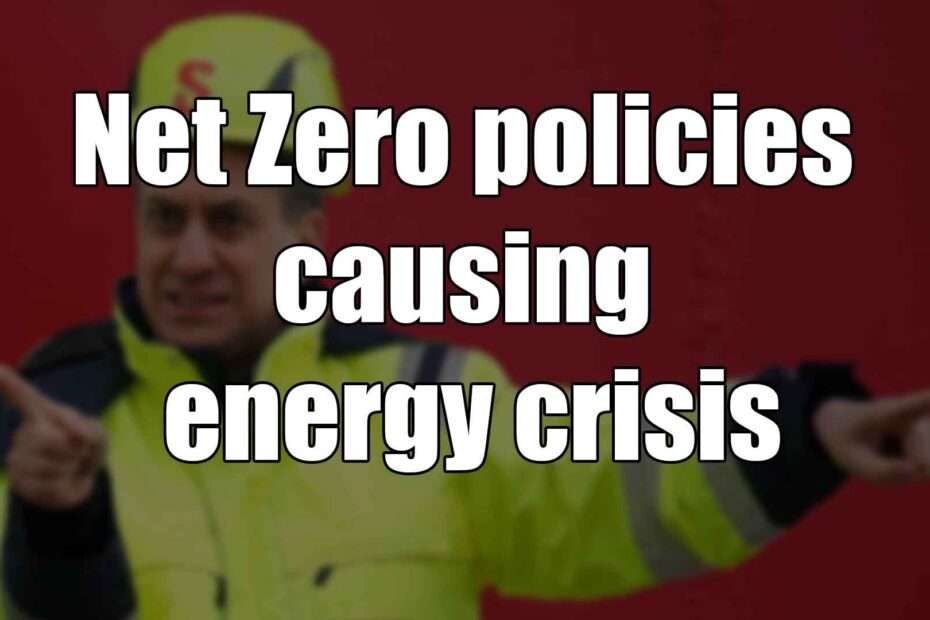Net Zero policies causing energy crisis
Energy Crisis Looms as Britain Faces Critical Power Shortages Amid Freezing Temperatures
Britain faced a severe energy crisis this week as temperatures plummeted to potentially -20°C, raising serious concerns about the nation’s power infrastructure and energy policies. The situation became particularly acute when the National Grid’s spare electricity capacity dropped to a precarious 580 megawatts at 5:30 PM on Wednesday, a margin so thin that experts warned even a minor power station outage could have triggered widespread blackouts.
The crisis highlighted significant challenges in Britain’s energy strategy, particularly regarding renewable energy sources. While the current administration has championed wind power, its contribution to the national energy mix stood at just 9%, with gas generation accounting for 55% of electricity production. The situation became so critical that two power stations, Rye House and Connah’s Quay, were paid a combined £12 million to provide just three hours of electricity during peak evening demand.
Adding to the growing concerns, the Bank of England has recently acknowledged that Net Zero policies are contributing to rising inflation and escalating energy prices. This admission comes at a particularly sensitive time, as the UK Health Security Agency issued an alert warning about the severe health implications of cold weather, particularly for those aged 65 and over and individuals with pre-existing health conditions.
The current energy strategy has drawn criticism for its ambitious timeline to achieve 95% green energy within five years. Critics argue that the technology required for such a transition isn’t sufficiently developed, pointing to the limitations of renewable energy sources. A telling example from last year saw energy companies paying over £1 billion to wind farms to cease operations during periods of excess wind, as the National Grid couldn’t handle the load.
The nuclear energy debate has also resurfaced, with advocates pointing to France’s model of extensive nuclear power plant construction as a potential solution for reducing reliance on renewable sources. Recent developments have seen one nuclear power station coming online, capable of providing energy for millions of homes, though experts suggest several more would be needed to meet national demand.
Financial implications of the energy crisis extend to household costs, with comparisons to international markets highlighting the severity of Britain’s situation. While US energy costs rose by approximately 6% last year and 14% since the end of COVID-19, British consumers have seen their costs nearly double. The US has simultaneously increased its market share of LNG supply to Britain from 22% to 50% following disruptions to European gas supplies.
The crisis has also sparked debate about the disconnect between policy makers and those most affected by energy policies. Critics point to the financial security of political leaders as potentially influencing their approach to energy policy, arguing that those making decisions about the nation’s energy future may be insulated from the immediate impacts of their choices.
The situation raises particular concerns about vulnerable populations, with health experts warning about increased risks of heart attacks, strokes, and chest infections among elderly and vulnerable people during cold temperatures. The removal of certain heating benefits, combined with rising energy costs, has amplified these concerns.
As Britain grapples with these immediate challenges, questions persist about the feasibility of current green energy targets and their economic impact. While long-term environmental planning remains crucial, the immediate needs for reliable, affordable energy supply have brought the timeline and implementation of Net Zero policies under increased scrutiny.
The crisis underscores the delicate balance between environmental ambitions and practical necessities, particularly during extreme weather conditions when reliable energy supply becomes literally a matter of life and death for vulnerable populations. As temperatures continue to drop, the adequacy of Britain’s energy infrastructure and the wisdom of its rapid transition to renewable sources remain subjects of intense debate.
Summary Conclusion
* Britain’s Energy Security Crisis:
– National Grid’s spare capacity dropped to dangerous levels of just 580 megawatts
– Gas currently generates 55% of electricity while wind contributes only 9%
– Emergency measures cost £12 million for just three hours of power supply
* Economic Impact:
– Bank of England confirms Net Zero policies are driving inflation
– UK energy costs have nearly doubled since COVID-19
– Significant contrast with US markets, where costs rose only 6% last year
– Growing dependence on US LNG imports, now at 50% of supply
* Policy Challenges:
– Target of 95% green energy within five years faces serious feasibility questions
– Infrastructure limitations exposed by paying wind farms £1 billion to cease operations
– Nuclear power debate intensifies, with calls for more nuclear stations
– Questions about the balance between environmental goals and practical energy needs
* Public Health Concerns:
– Severe weather warnings with temperatures dropping to -20°C
– Particular risks for elderly and vulnerable populations
– Increased likelihood of heart attacks, strokes, and chest infections
– Removal of heating benefits compounds vulnerability
* Strategic Considerations:
– Need for better alignment between environmental ambitions and energy security
– Questions about the pace of renewable energy transition
– Growing debate about the role of nuclear power in the energy mix
– Concerns about disconnect between policy makers and affected populations
These developments highlight the urgent need for a more balanced approach to energy policy that considers immediate security needs alongside long-term environmental goals.

